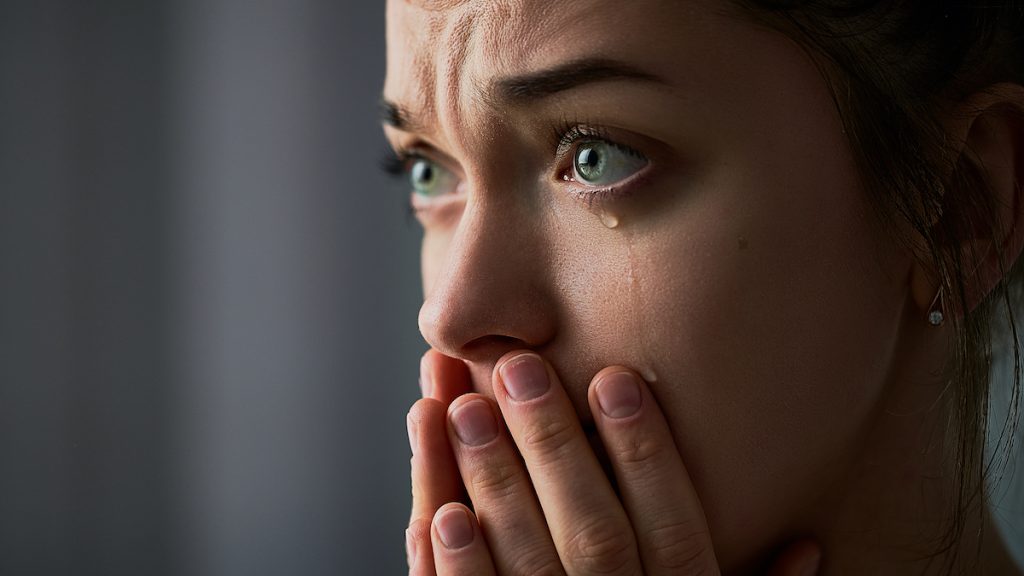
Given increased scrutiny of the online world and the potential for harm, a focused discussion of how viewing self-harm and suicide-related images online is likely to impact is overdue. This is not so much about the content of an image per se – although that is crucial – but thinking in greater detail about how viewing that image in a particular online space impacts us, and identifying potential mechanisms that account for our different responses to visual content. Are there implications from a more nuanced understanding of how we respond to images for clinical practice or legislative provision for online safety?
Previous work has outlined the potential for harm when posting and accessing self-harm and suicide-related content online (Marchant et al., 2017; Arendt et al., 2019; Hawton et al., 2020) and cautions that viewing and interacting with such content can lead to an increase in self-harm and suicidal-behaviours. However, it is also in online spaces that individuals can make sense of their own thoughts and behaviours, feel a sense of belongingness, and seek and/or offer support (Lavis & Winter, 2020).
Here, Dr Karima Susi and colleagues (2023) examine the potential impact and underlying psychological mechanisms that could explain the relationship between exposure to visual content and impact, or which might contribute to a viewer’s change in affect, cognition, or behaviour. Their aim is to contribute important context for our discussions around keeping young people safe online.

Current evidence in the field are of mixed nature, as viewing self-harm and suicide-related images online can be harmful and protective.
Methods
A comprehensive literature search was conducted using CINAHL, Cochrane Library, EMBASE, HMIC, MEDLINE, PscyArticles, PsyINFO, PubMed, Scopus, Sociological Abstracts and Web of Science. This included self-harm related, image and social media terms. Supplementary searches were conducted using Google Scholar and citation searching of included reviews.
Included were peer-reviewed, empirical studies in English presenting evidence relating to the viewing of self-harm images/video of self-injury/self-poisoning and where self-harm images appeared online or on social media and where findings related to the potential impact of, or responses to, viewing self-harm images. The review adhered to PRISMA guidelines and was pre-registered. The first author extracted data for all papers. The second author independently extracted data relating to key domains and those open to subjective judgement from all papers.
Given heterogeneity of the methodology and findings, a narrative synthesis was conducted to ‘tell the story’ of the qualitative and quantitative findings collectively. This involved synthesising and grouping data into:
- areas of harmful or protective impact;
- underlying mechanisms (processes that could explain the relationship between exposure and impact, or that may have contributed to a change in affect, cognition or behaviour).
A framework was devised through consensus to record impacts (harmful or protective) across eight areas, namely self-harm behaviour; engagement behaviours such as sharing, commenting or liking; social comparison; self-harm identity; social connection; emotion; cognition; and physiological effects. Potential mechanisms, conceptualised using definitions in related literature, recorded implicit or explicit reference to: assortative relating, aversion, normalisation, disgust, emotional dysregulation and regulation, habituation, social positive reinforcement, priming, social comparison, social integration and regulation and social learning.
Results
15 studies were included (7 quantitative, 7 qualitative, and one mixed-methods). All except one were cross-sectional studies. Evidence of impact of exposure to self-harm images was via questionnaires, semi-structured interviews, analysis of comments alongside images or patterns of posting and reposting/reblogging of images, or by measuring exposure in an experimental design. Studies originated from Canada (4), USA (3), China (2), Germany (2), UK (2), Australia (1) and Sweden (1). The majority of participants were white and female and aged between 14 and 27 years. However, demographic information was not consistently reported. Most studies reported in relation to one online platform including Instagram, Reddit, Tumblr, San Weibo, YouTube, as well as online forums and the internet more broadly. Study quality ranged from high (8 studies) medium (5 studies) to low (2 studies).
Areas of impact
All 15 studies found potential harmful impacts. Key findings included:
- Self-harm behaviours: impact resulted from exposure to images which normalised and triggered self-harm resulting in an increase in frequency and/or severity of behaviour. There was evidence of imitative behaviour, and that images were intentionally sought to trigger the right mood for self-harm or potentiate behaviour.
- Engagement behaviours, social comparison and identity: self-harm was encouraged through sharing and commenting on images. Depictions of wounds, or more severe self-harm, elicited more comments. Publishing and reblogging could normalise self-harm as an effective coping strategy, or elicit positive reinforcement via admiration, encouragement, empathy. A competitive mindset was described and encouragement of a self-harm identity.
- Social connection: immediate connection, validation and support could lead to unintended consequences. For example, images and comments shared to help others feel less alone portrayed self-harm as an acceptable coping mechanism or contributed to validating or maintaining self-harm by sharing ideas around methods. A desire to continue receiving support could perpetuate behaviour. Social support could inadvertently discourage offline support seeking.
- Emotional impact: Graphic images were found to be emotionally disturbing and potentially triggering, instigating depression, shock, grief, disgust, isolation, hostility, empathy, or concern. Compared to words, images were found to be more impactful and led to a greater decline in mood, particularly in females.
- Cognitive and physiological impact: Increased urges or inspiration to self-harm led to increased suicidal ideation and hopelessness and evoked mental imagery, such as imagining how it would feel to self-harm in the same way. One study found evidence of quickened heart rate or ’rush’ in response which could trigger self-harm.
Nine studies reported potentially protective impacts from viewing online content. These included:
- Self-harm behaviours: viewing images served as a proxy for self-harm thereby reducing behaviour, at least in the short term, or could be used strategically to avoid more severe self-harm. For some viewing self-harm images discouraged self-harm acts potentially by prompting feelings of aversion or disgust.
- Engagement behaviours, social comparison and identity: In some cases highly reblogged images included messages of hope and recovery, and comments on images encouraged uploaders to seek help. Viewing, creating and sharing images had a positive impact in terms of promoting self-expression, identity and recovery narratives.
- Social connection: posting of images encouraged online peer-support that could be missing offline, helped individuals to identify with others through self-disclosure, encouraged social connection and validation, and lessened isolation. This could mitigate urges to self-harm.
- Emotional impact: viewing images promoted a positive change in emotional state, vicariously providing relief, comfort or a sense of calm which meant self-harm could be avoided. Fear and disgust responses were also protective.
- Cognitive and physiological impact: anticipatory and vicarious relief responses alleviated urges to self-harm. The adrenaline rush from viewing images also substituted for self-harm.
Mechanisms
- Harmful mechanisms: Those most commonly implied included normalisation, assortative relating, social learning, social positive reinforcement and emotional dysregulation. Additionally, review authors identified social integration and regulation, such as sharing ideas, cognitive priming (including mental imagery), habituation, lower aversion to self-harm stimuli and comparison and competitiveness.
- Protective mechanisms: Those implied were normalisation, social integration and regulation, social positive reinforcement, emotional regulation, aversion, and self-reflection. Additionally, review authors identified assortative relating, priming and social comparison.

Images can trigger powerful emotions which could increase the likelihood of engaging in self-harm related behaviours.
Conclusions
The study highlights various harmful and beneficial impacts associated with viewing self-harm imagery, signalling the idiosyncratic nature of response and the importance of considering the contextual and dynamic nature of interaction. The authors suggest that mechanisms identified in the review provide insight into motivations involved in viewing self-harm images online, such as emotional dysregulation and social connection.

Drawing on the findings of this review, clinicians should routinely assess young people’s engagement with self-harm and suicide-related content online.
Strengths and limitations
This is solidly executed review which follows a rigorous process. Inclusion of international studies is a strength (although the available evidence remains homogeneously largely white and female), and both qualitative and quantitative data were included for breadth. Quality and risk of bias were appraised using relevant Clinical Appraisal Skills Programme checklists in accordance with conventional cut-offs. Appraisal was completed independently by two reviewers, with disagreements resolved by discussion to reach consensus. Interrater reliability using weighted kappa calculations was excellent.
To date there has been limited critical engagement with the mechanisms through which interactions with visual self-harm content online confer their impact, and little examination of visual imagery in addition to verbal content. As such the focus of this study is novel and channels important discussions, such as an examination of contagion mechanisms.
There are important limitations to consider. Participants represented a broadly homogenous group of mainly white females. That being said, protection of anonymity in studies meant that for a large proportion of the data demographic and contextual information was not available. As such there remain questions over potential moderators of the viewing experience such as age, prior history with self-harm or other mental health issues, whether the viewing was intentional, for how long and in what context or time viewing occurred, or if images were self-generated. Further research exploring these factors could help to explain inconsistencies in response. The studies relied mainly on self-report and were mostly cross-sectional and so causation cannot be inferred. On the whole, potential mechanisms identified in the research were not directly or explicitly investigated but were largely implied by cited study authors or were identified by the review authors. Interpretation was reached with consensus, but nonetheless was subjective.

The studies included in this review had a predominantly white and female sample, which leaves many questions about the wider population.
Implications for practice
Young people who present to services should be routinely asked about online self-harm image viewing behaviour; clinicians or other frontline staff working with young people should be aware of the potential for harm. The eight areas of impact identified could guide routine clinical assessment. However, the findings clearly point to the complex, fluid and individual nature of interaction and response, and that there are potentially important gains not least in terms of social connection, support and recovery that should not be overlooked. In fact, boundaries between positive and negative impacts can be blurred. For whom are they harmful or beneficial? When? Why? All impacts and functions should be explored in practice with a young person to identify vulnerabilities and protective factors.
The challenge of creating safe online spaces is to take steps to mitigate risk without preventing access to the benefits. The research has important implications for the regulation of online communities given that sharing of user generated images between individuals is complex. A greater weighting of evidence points to harmful over beneficial impact from engaging with user-generated content online. Nonetheless, the findings clearly point to the complex, fluid and individual nature of interaction and response and indicate a need for more research in this area to sharpen decision making around policy, practice and safeguarding.
A strong take-away from this review is that images can trigger powerful emotions and may relate to a change in cognition, affect and behaviour. Findings indicated that viewing visual imagery can evoke mental imagery. The exploration of the impact, function and mechanisms of visual imagery logically extends beyond real perceived content in online spaces to mental imagery, dreams, flashbacks. Recently, Lawrence et al. (2023) found a high prevalence of mental imagery of suicidal and non-suicidal self-injury among clinical samples which can be vivid, realistic, and preoccupying, and which may confer a mixed emotional and physiological regulation function. They highlight the need to think beyond the verbal when assessing an individual’s cognitions about self-harm behaviour and ideation and to consider the amplification which can occur when cognitions are experienced in the mind’s eye. There are important considerations too for broader experimental work which draws on visual self-harm stimulus exposure and evaluative conditioning in the development of interventions to reduce self-harm (Franklin et al., 2016), or the development of immersive intervention work in the Virtual Reality space.
Responsible Research and Innovation (RRI) and Patient and Public Involvement and Engagement is recommended as standard in all work to ensure ethical, appropriate, and meaningful research. There is growing recognition that responses to user-generated content are context-bound and may change over time, such as following repeated exposure, and there is a need to address this further. Recently, for example, House et al. (2022) described the interplay between person, place, and content in driving response to self-harm content online. Nuanced discussions exploring the nature, function and context of online interaction with powerful visual content about self-harm are needed to account for the likely dynamic and idiosyncratic relationship with individuals.

Conclusions drawn from research evidence to inform policy and practice must account for nuances in response to suicide and self-harm online content.
Statement of interests
All authors conduct research in the field of suicide prevention. No conflicts of interest to declare with the paper reviewed in this blog.
Links
Primary paper
Susi, K., Glover-Ford, F., Stewart, A., Knowles Bevis, R., & Hawton, K. (2023). Research review: Viewing self-harm images on the internet and social media platforms: systematic review of the impact and associated psychological mechanisms. Journal of Child Psychology and Psychiatry.
Other references
, , , , , , … & (2017). A systematic review of the relationship between internet use, self-harm and suicidal behaviour in young people: The good, the bad and the unknown. PLoS One, 12, e0181722.
, , , , , & (2020). Clustering of suicides in children and adolescents. The Lancet Child and Adolescent Health, 4, 58– 67.
, , & (2019). Effects of exposure to self-harm on social media: Evidence from a two-wave panel study among young adults. New Media and Society, 21, 2422– 2442.
Franklin JC, Huang X, Bastidas D. Virtual reality suicide: Development of a translational approach for studying suicide causes. Behav Res Ther. 2019 Sep;120:103360. doi: 10.1016/j.brat.2018.12.013.
Social media, self-harm, and suicide: we should be promoting research informed decision making about how and what to regulate. doi:10.1136/bmj.o2583
Photo credits
- Photo by ROBIN WORRALL on Unsplash
- Photo by visuals on Unsplash
